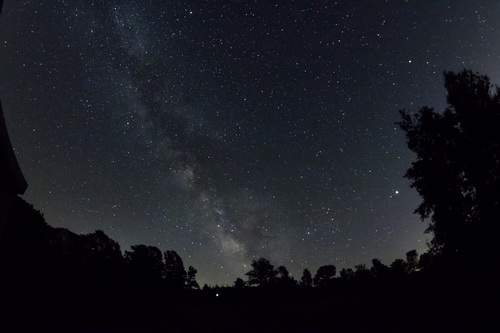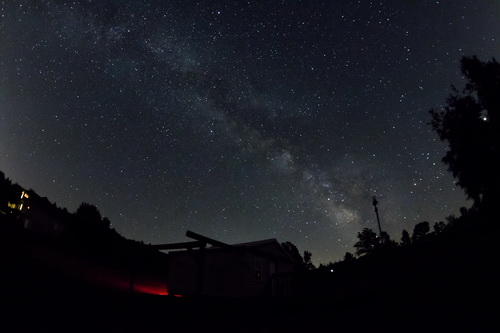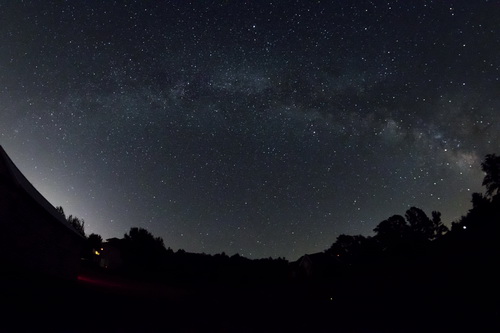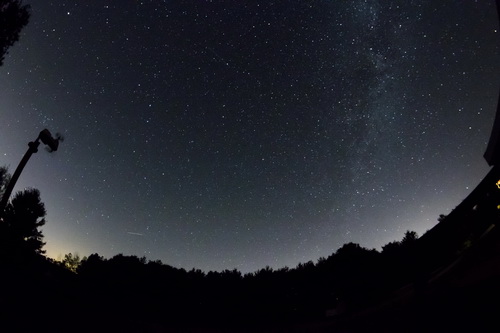Welcome to Jarek's Amateur Astronomy Site
What's new
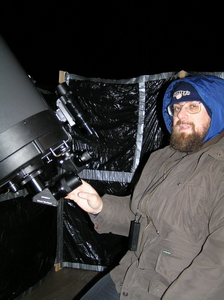 I
have created this website to share my experience and enjoyment in
amateur astronomy. It has been and still is my passion, and I hope
it will be for many years to come. I am interested in visual
observing, imaging and electronically assisted observing, and
I pursue all of them in turn. You will find a lot of
information on this website related to my equipment, how I use it
and what tricks I learned to make it work better. One of the most
important parts of the website is
astrophotography where are all the images that I took using various telescopes
and cameras over the years.
I
have created this website to share my experience and enjoyment in
amateur astronomy. It has been and still is my passion, and I hope
it will be for many years to come. I am interested in visual
observing, imaging and electronically assisted observing, and
I pursue all of them in turn. You will find a lot of
information on this website related to my equipment, how I use it
and what tricks I learned to make it work better. One of the most
important parts of the website is
astrophotography where are all the images that I took using various telescopes
and cameras over the years.
I have been interested in astronomy and astrophysics since my middle
school days, but I wasn't observing until relatively
recently (2002). Observing supplements my "theoretical" interest in astronomy.
By profession I am a scientist (originally quantum chemistry, now
bioinformatics), and I read about astronomy (and observing) more
than I do observe (or image). I think that understanding the
object
I see (or image) makes the hobby more fulfilling and complete.
The stars are just colorful points of light in a telescope, but with
the knowledge of what they are, how they work, and evolve brings
entirely different perception. IMHO ![]() ...
...
I own several telescopes and binoculars as well as a small backyard observatory. Over the years I have produced a lot of images, which can be viewed in my gallery. My newest pursuit is Electronically Assisted Astronomy (EAA).
There are three local resources I set up and maintain on this website that may be of interest to you. The first one is a page with information about expected cloud coverage for Ithaca, NY (based on NOAA) with Sun and Moon data (from U.S. Naval Observatory). The second is an extensive set of observing lists for northern and southern skies. The third is the Moon calendar for Ithaca, NY including sunrise/sunset and other data.
In the Fall 2012 Cornell University run a short story about my hobby in their Ezra Magazine and Cornell Chronicle.
About me and my hobby
My practical amateur astronomy journey started in the summer of 2002 with a small 4.5" Dobsonian from Orion
(SkyQuest 4.5), but soon morphed fast into a serious enterprise.
After approximately a year I added Celestron C9.25-SGT, then 80mm piggyback refractor (C80ED) and I was quite happy until I got
aperture fever again ... My thoughts slowly focused on the biggest
of the Celestron SCTs - the famous 14". That urge to have bigger and
bigger and bigger telescope! CGE1400
is a great scope, wonderful optics, excellent mount! It performs
very well for visual observing, with good pointing accuracy. C14 is a
very
versatile imaging platform - wide field with a Hyperstar, medium and
high magnification with flatteners/reducers and very high resolution
with a Barlow(s) for planets. The only problem was that for each
session I had to choose - visual or imaging since I couldn't do both
at the same time with one scope ... I like both, so the next step
was to buy a second big scope for strictly visual use. When I built
my observatory I also acquired a purely visual scope -
18" Obsession
Classic Dobsonian and C14 became a dedicated imaging scope. I have
also added the second imaging scope: 10" Orion Newtonian with a
field of view between this of C14 Hyperstar and C14 with a reducer.
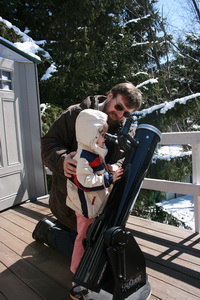 I am interested in both visual observing and
digital astrophotography, for which I first acquired Meade's Deep Sky Imager (DSI,
the first Meade color camera). It
was a nice little CCD camera, I used it for some
time, but
the results were not that great - I think both due to mine and
camera limitations. Then my wife Ewa got Canon Digital Rebel XTi for Christmas
2006: she used it for daytime photography, I used it at night.
This was a big improvement, and after a while when I realized big
chip guided imaging is what I want and I got a Hutech modified Canon
40D, and later self-modified Canon T2i. The next step was to get a second dedicated color imaging
camera: QHY8 from CCD-Labs, necessary if I wanted to use my both
imaging scopes simultaneously (later replaced with T2i). The one last part of the imaging set
that was still missing was a mono camera with a sensor comparable to
Canon 40D or QHY8, to use for narrowband imaging or to produce LRGB
images with an LRGB filter set. This last part materialized in March
2010 in the form of SBIG ST-8300M camera, and since then my
equipment set was quite unchanging. At least until I ventured into
electronically assisted observing ...
I am interested in both visual observing and
digital astrophotography, for which I first acquired Meade's Deep Sky Imager (DSI,
the first Meade color camera). It
was a nice little CCD camera, I used it for some
time, but
the results were not that great - I think both due to mine and
camera limitations. Then my wife Ewa got Canon Digital Rebel XTi for Christmas
2006: she used it for daytime photography, I used it at night.
This was a big improvement, and after a while when I realized big
chip guided imaging is what I want and I got a Hutech modified Canon
40D, and later self-modified Canon T2i. The next step was to get a second dedicated color imaging
camera: QHY8 from CCD-Labs, necessary if I wanted to use my both
imaging scopes simultaneously (later replaced with T2i). The one last part of the imaging set
that was still missing was a mono camera with a sensor comparable to
Canon 40D or QHY8, to use for narrowband imaging or to produce LRGB
images with an LRGB filter set. This last part materialized in March
2010 in the form of SBIG ST-8300M camera, and since then my
equipment set was quite unchanging. At least until I ventured into
electronically assisted observing ...
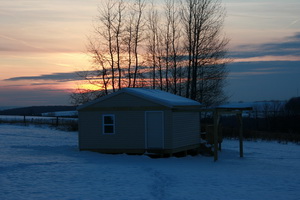 I
am pretty lucky to live in a place where light pollution is not severe,
even though my first house in Ithaca was relatively close to the
city I was still able to observe from my backyard's deck,
and on a good night limiting magnitude was around 5.5 (depending on where I looked,
worst part low in the west was probably ~4.0). A big drawback of my
backyard observing was my field of view - there were trees
around, and my declination limit was about -18° (and I needed good timing to
use this opening!). However it all changed for the better in the
summer of 2008. We moved to a new house, farer away from the
center of Ithaca, where I built a small backyard
observatory! At my new house the
limiting magnitude is 6.30 (21.33 mag/sq arc sec) on best nights and my declination limit is around -32°
across all southern horizon - I have successfully imaged
NGC253 galaxy in
Sculptor! My observatory houses two permanent scopes: my old C14
, and Orion 10" Newtonian (both on CGE mounts) to be used for
imaging or EAA. I have also added a strictly visual large aperture
portable scope: Obsession 18" classic. Now I can carry out imaging
and do visual observing at the same time the same night. For me it
is one of the best advantages of having an observatory.
I
am pretty lucky to live in a place where light pollution is not severe,
even though my first house in Ithaca was relatively close to the
city I was still able to observe from my backyard's deck,
and on a good night limiting magnitude was around 5.5 (depending on where I looked,
worst part low in the west was probably ~4.0). A big drawback of my
backyard observing was my field of view - there were trees
around, and my declination limit was about -18° (and I needed good timing to
use this opening!). However it all changed for the better in the
summer of 2008. We moved to a new house, farer away from the
center of Ithaca, where I built a small backyard
observatory! At my new house the
limiting magnitude is 6.30 (21.33 mag/sq arc sec) on best nights and my declination limit is around -32°
across all southern horizon - I have successfully imaged
NGC253 galaxy in
Sculptor! My observatory houses two permanent scopes: my old C14
, and Orion 10" Newtonian (both on CGE mounts) to be used for
imaging or EAA. I have also added a strictly visual large aperture
portable scope: Obsession 18" classic. Now I can carry out imaging
and do visual observing at the same time the same night. For me it
is one of the best advantages of having an observatory.
I have now several measurements of sky brightness at my new house, and it varies with weather (haze, or high thin cirrus make it worse) and time of the night (many lights switch off after midnight). Most recent measurement logged is 5/8/2018 11pm: at zenith 21.33 mag/sq.arc.sec (equivalent limiting magnitude 6.30!), angled towards primary directions at 45 degrees: south 21.07 (6.16), east 21.13 (6.19), north 21.13 (6.19) and west 20.78 (6.00). Excellent! West is the worst, but it is expected, Ithaca lies in this direction. I made several wide-angle pictures of the night sky from my observatory showing sky quality - and how beautiful the night sky is!
